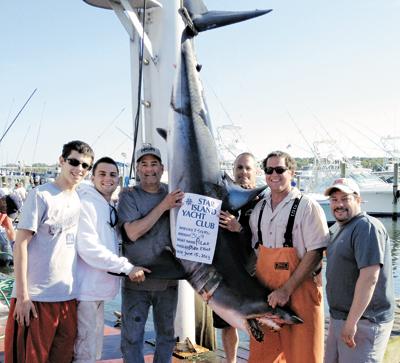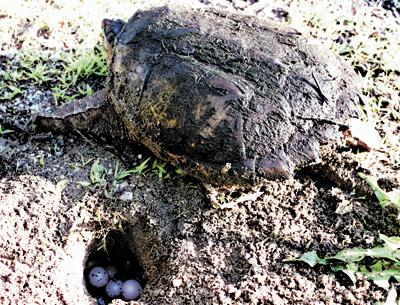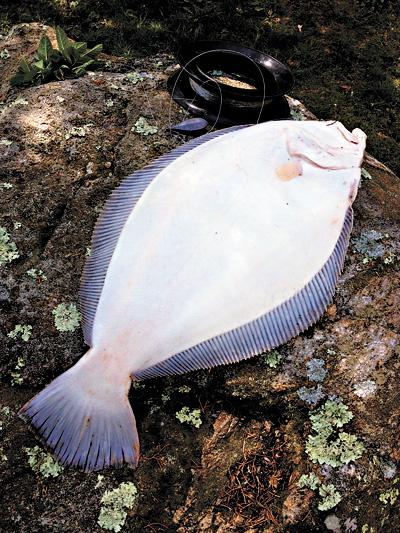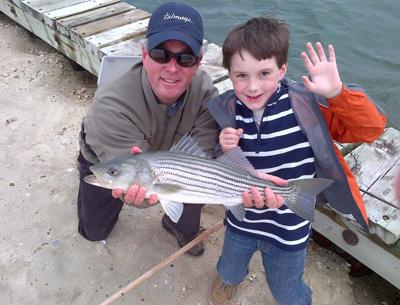A Cautionary Tale
A Cautionary Tale

Of course, the big news is the 44.7-pound striped bass that the surfcaster Ben McCarron caught on Saturday under the Montauk Lighthouse on a bucktail. The big bass puts McCarron in first place in the Montauk SurfMasters spring tournament, and the fish beat the competition in the weekend tournament held from Paulie’s Tackle Shop in Montauk.
Geoff Bowen’s 21.7-pound striper and Nick Tamorino’s 15.46-pounder stand in second and third places in the SurfMaster’s adult division. Brendan Ferrell leads the youth division with a 13.64-pound bass.
There was the rumor of a truly giant striped bass caught by a dragger in recent days. It was reportedly released. The state record stands at 76 pounds, caught in Montauk in 1981. The largest striped bass ever caught is said to be a 125-pounder caught in North Carolina in 1891. Paul Apostolides at Paulie’s Tackle shop in Montauk said he saw a picture of the dragger-caught bass. He put the weight at about 80 or 85 pounds.
Surfcasting and just about any other kind of fishing has been hampered by this spring’s unusually cool, wet, and blustery weather. For surfcasters, the north side of Montauk Point has been active in the bluefish department toward the top of the tide.
Given the weather, there’s not lots to report from the decks of boats, so it’s a good opportunity to describe how this gazetteer hopes to expand the “On the Water” column.
Fishing will come first, for the most part, but the column will also include news and tales from surfers, sailors, divers, and all manner of water addicts. We will begin with a cautionary tale.
After a few ragged attempts at trolling under sail from the sloop Leilani toward the end of last summer, the plan was to come up with a strategy to meet the challenges not faced by power boaters. The beauty of trolling under sail for striped bass, bluefish, and even false albacore is the silence of it. No engine noise, no vibration, no exhaust fumes. The drawbacks include handling sail and fishing rod simultaneously, which can mimic a Laurel and Hardy episode, given enough wind.
Last year a few fish were dropped when this helmsman/angler was unable to turn Leilani upwind to reduce speed quickly enough to give the fish the attention they deserved. The answer could be to reduce reel drag after a hookup to buy time enough to put the boat in irons (bow into the wind to take the wind out of the sails), or better yet, be forehanded and have the mate woman the helm with a carefully designed protocol. Stay tuned.
Leilani was launched from Uihlein’s Marina in Montauk on Sunday and driven south to her mooring, which went virtually unused last season. Mooring ball and chain seemed okay the day before when the mooring pendants (lines that tether boat to mooring) were made fast to the ball. Leilani’s two-person crew attached pendants port and starboard, jumped into Lake Montauk and began the 75-yard swim to shore after taking care to lower the boat’s ladder so as not to meet the fate of the crew of a sailboat who perished when they went for a swim without providing a way to get back aboard.
The lake water was warm enough in wetsuits, a nice swim. The captain switched to backstroke to admire his 30-foot Bristol sloop, and . . . “Hey,” followed by a blue string of words. Leilani, mooring ball, and pendants were drifting across the lake toward its eastern shore. The captain became Johnny Weissmuller, gave his mate the cellphone he was carrying aloft wrapped in a plastic bag, and sprinted for Leilani. Fortunately the wind was light, the boat was caught, boarded, and her engine lit.
An inspection showed that the mooring chain was still attached to the mooring ball, which means the shackle that hitches chain to mooring anchor on the bottom had failed. Lesson learned.
The Star Island Yacht Club’s 27th annual shark tournament will be held on Friday and Saturday. There will be a captain’s meeting at the yacht club starting at 7:30 tonight.





